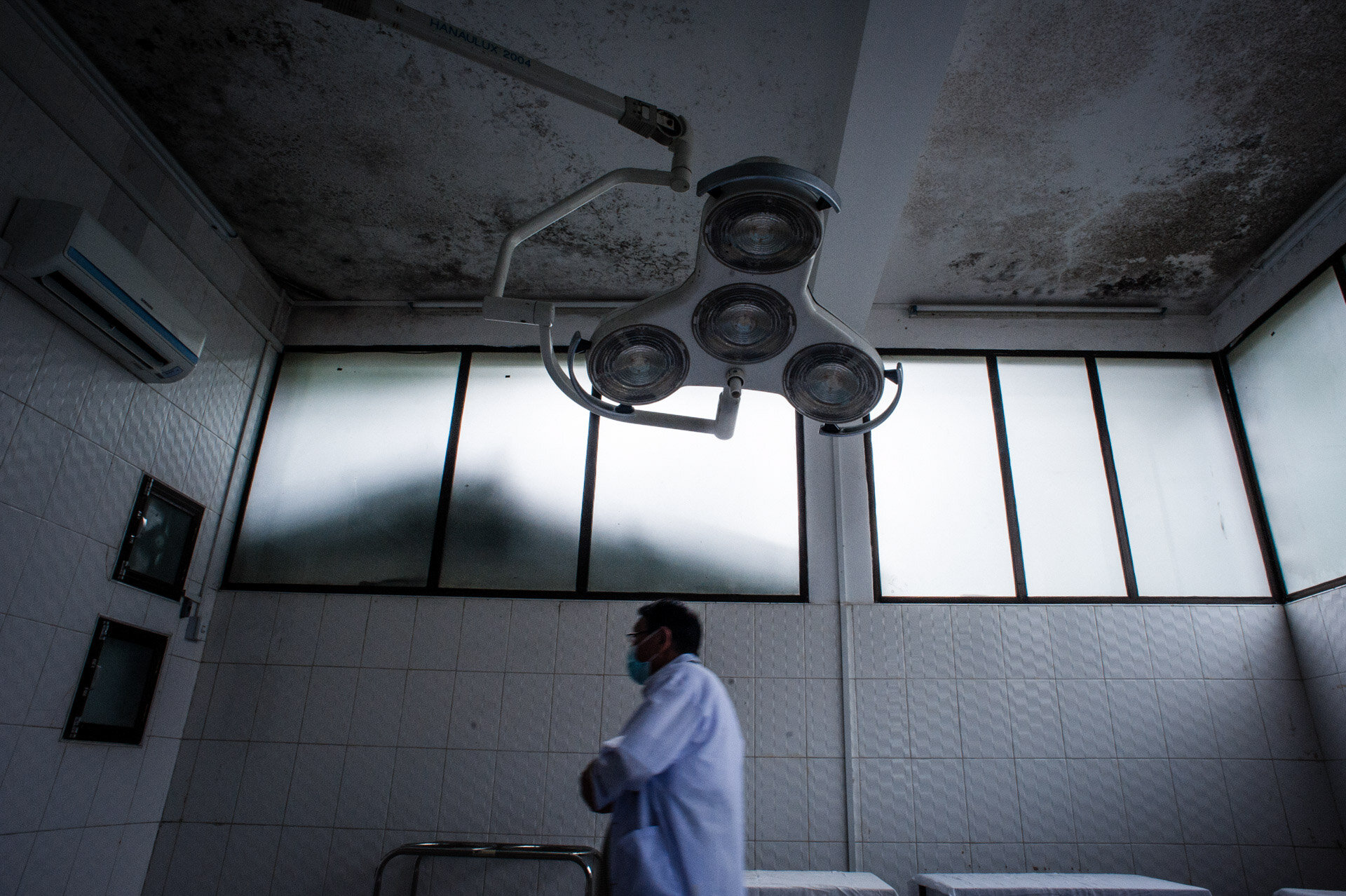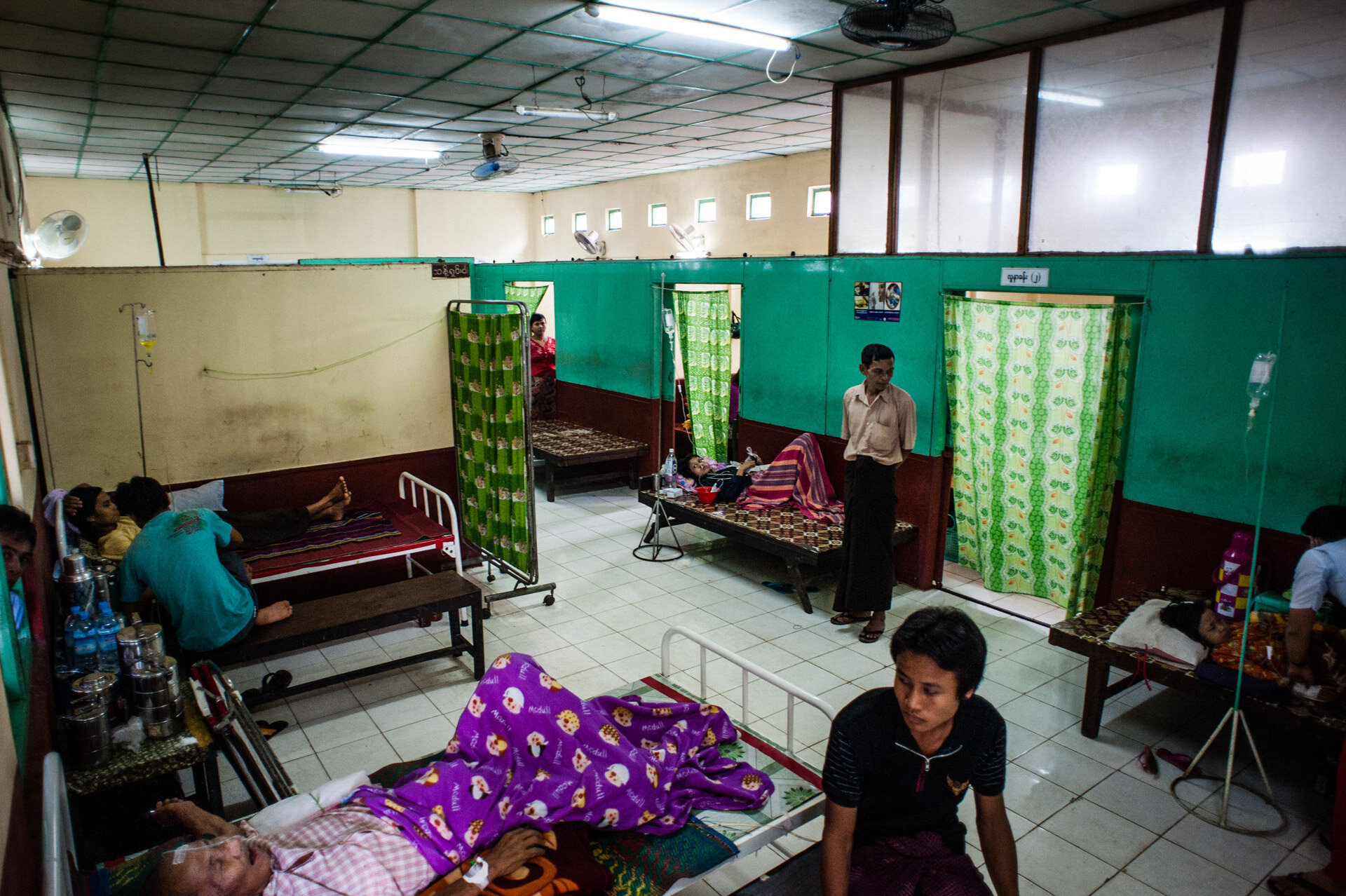
Myanmar Health Care

MEDICINE OF MYANMAR. 2012
Myanmar is included in the list of 57 countries worldwide with the most critical shortage of medical personnel. The total of governmental expenditure at healthcare for 2007 (WHO) is 1.9 percent of its gross domestic product (GDP). The estimation is 23 health workers per 10,000 people (according to the UN World Health Organization data). As for the country’s 60 million people, of which 70 present live in rural areas such estimation sounds even more critical.

Patients of the Baptist leprosy hospital. South-East Myanmar. Baptist leprosy hospitals – last one of three hospitals in Myanmar, which have been taken away from Baptist church by the government during military rule.


The standing of the NGO sector is precarious, not least because of the governmental policy of double standards. The “Doctors without Borders” report in November 2012: “That we are prevented from acting and threatened for wanting to deliver medical aid to those in need is shocking and leaves tens of thousands without the medical care they urgently need” (Joe Belliveau, operations manager). Even though organizations operating in Myanmar, as well as those aspiring to operate, are reasonably numerous, the access granted to them in the provision of help is limited.
The access to in-field data, which could serve the purpose of international awareness promotion, as our experience witnesses, remains a thorny issue. This one shall persist as long as journalists have to overcome the resistance of the top-down command structure to any steps made in this direction.



Official resources depict the private healthcare sector in terms of rapid expansion and gradual development. According to some reports, it provides about 75%- 80% of ambulatory care. Yet still, the involvement of private healthcare in essential public health programs is obviously limited. In the context of the high poverty level, the situation turns inextricable for the most vulnerable population groups: children and women.

HIV prevention and care sector is 60x80feet territory with two houses hosts around 180 HIV positive people.
From the official statistics, there are 130000 HIV positive people in Myanmar, (winch is usually much lower than reality). 30000 will get medication, of which 9percent will be sponsored by the government and the rest – by external organizations.
On the photo: family, all tested HIV positive surrounded by their property in the communal dormitory.



In an ecstatic outburst, the dragon-woman calls for spirits and enchants sesame oil to cure her patients. Regardless of Buddhist symbolics at homes of local shamans, one frequently can find echoes of old pagan beliefs seamlessly blended with the main religion.
Important and quite trusted by people part of countries’ official medicine is traditional clinics. Healers, who are using a mix of herbs and roots to help patients are officially licenced and. Most herbs are used internally. Following precise instructions described in instructions book, doctor’s assistant makes mixture and packs it to a small plastic bag and closes it with the fire of pocket lighter.



Sick people have to travel for hours, or maybe even days, through impassable areas, to get to medical facilities, where they are to face both lack of human resources, at times proficiency and lack of monitoring information, as also required drugs. It is obvious, that the situation turns even graver during periods of social disturbances and climatic disasters.

Woman gives birth at the back seat of the car on the way to the hospital



Under conditions described above the role of traditional medicine for the public healthcare system can hardly be overestimated. It occupies a distinguished sector in rural healthcare, and even under harsh shortage of financing receives considerable support by the government, according to official claims. Yet, the core undealt issue for both traditional and, not less often, state medicine is the lack of skill in diagnostics and the absence of clinical records. In the meantime, at least two aspects of healthcare provision show signs of improvement.
The development of medical education is quite intensive. Thus, due to striving for proficiency new-coming physicians obtain a sufficiently high level of knowledge. In conjunction with the extension of access to advisory services and continuous medical education granted for foreign specialists, this tendency may bring about favourable results.


